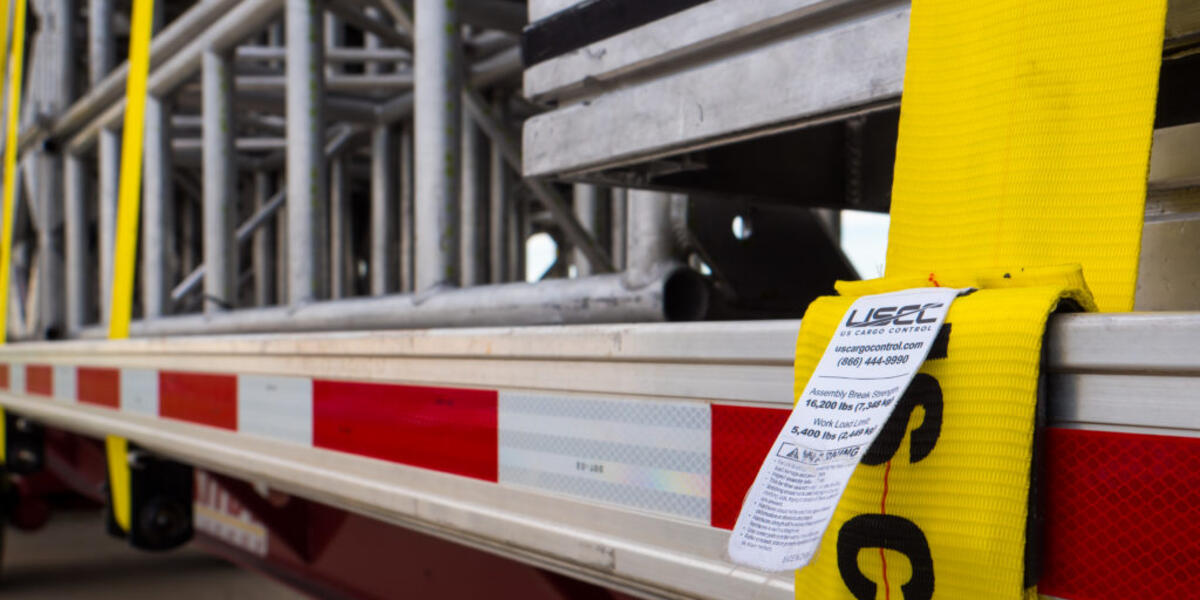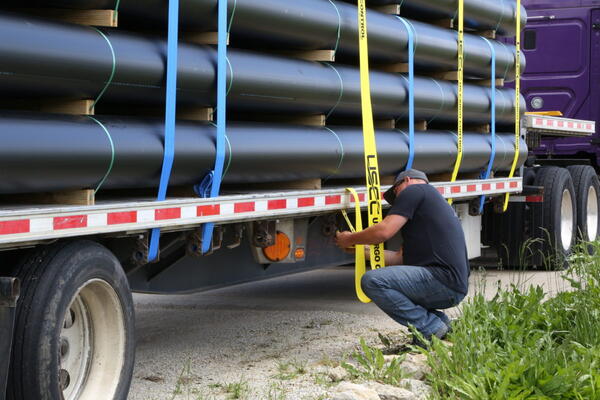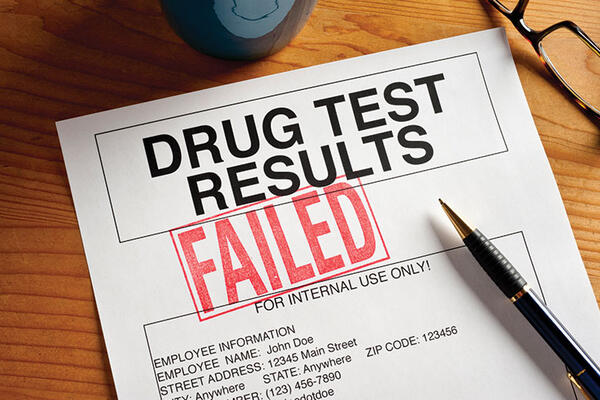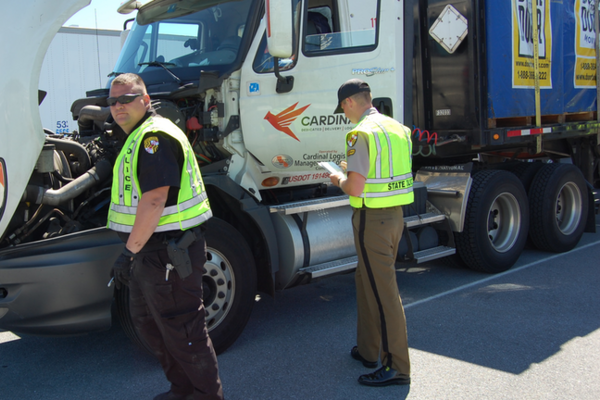Anything and everything carried on a truck must be properly secured to prevent loss of control or falling cargo from injuring drivers, passengers, or pedestrians. While safe cargo securement principles (and of course regulations) apply to every single item carried for delivery, they also apply to anything else on the truck, including dunnage, tools, and equipment you need to get your job done. Shovels, blocks, webbing, chains, spare tires, brooms, forklifts, pallet jacks, winches, ratchets, etc., all must be secured.
- Know the regulations—Cargo securement standards represent the minimum safety requirements for general cargo and some specific commodities. They are available at no charge from FMCSA in the U.S. and from Canadian Council of Motor Transport Administrators in Canada.
- Invest in the illustrated cargo securement handbook, which includes both U.S. and Canadian regulations for reference. Click on CVSA’s store at www.cvsa.org and order a copy of Practical Cargo Securement: Guidelines for Drivers, Carriers & Shippers, 406 pages, USD$30
- Download the FMCSA Driver’s Handbook on Cargo Securement and provide a copy to your drivers. Integrate the handbook sections that apply to your type of operation in your Driver’s policy and procedures manual.
- Properly secure all equipment as well as your load—one of the most frequently cited violations is for improper securement of dunnage or equipment, such as tarps, blocks, chains or other tie downs, spare tires, brooms, forklifts, pallet jacks, winches, ratchets, etc.
- Inspect tie downs for wear and damage. CVSA’s North American Standard Out-of-Service Criteria includes the tie down defect tables for chain, wire rope, cordage, synthetic webbing, steel strapping, fittings or attachments and anchor points. If worn out, tie downs should be discarded.
- Brace and block cargo properly within sided or van trailers. Loads that shift can cause not only crashes but damage to your equipment. And they indicate violations that will affect your company’s safety rating.
- Use best practices or due diligence. There may be best practices, established by consensus by those who haul what you’re hauling, that are worth following. If your shipment is more unique, do your research, as the rules are established for a reason. Ensure your load is contained, immobilized or secured so that it cannot: (a) leak, spill, blow off, fall from, fall through or otherwise be dislodged from the vehicle, or (b) shift upon or within the vehicle to such an extent that the vehicle’s stability or maneuverability is affected. If needed, hire a professional specializing in vehicle loading.
CDL Drug and Alcohol Clearinghouse Stats from 2020
The CDL Drug and Alcohol Clearinghouse has been around for a little over a year. The number of portal accounts, requested queries, and data submissions continue to increase.
The Federal Motor Carrier Safety Administration (FMCSA) provided Clearinghouse statistics as of January 1, 2021, to summarize its busy first year of operation.
Number of accounts
The Clearinghouse has 1,767,885 unique accounts, with some users registering as multiple roles. The following summarizes the accounts based on role:
|
User role |
Number of accounts |
|
Driver |
1,599,868 |
|
Employer |
197,212 |
|
consortia/third-party administrators (C/TPA) |
14,098 |
|
Medical review officer (MRO) |
2,791 |
|
Substance abuse professionals (SAP) |
3,036 |
In many cases, more than one user account is associated with a single organization.
Queries requested since launch
Effective January 6, 2020, employers are required to query in the Clearinghouse when hiring someone in safety-sensitive position under Part 382, and annually thereafter.
The first annual query of the Clearinghouse for current drivers (who were in a motor carrier’s Part 382 program as of January 6, 2020) was due no later than January 5, 2021.
Queries since January 6, 2020
|
Type |
Number of queries |
|
Full pre-employment |
1,429,842 |
|
Limited |
2,701,763 |
|
Full, not pre-employment |
136,806 |
Reported violations
Employers, designated C/TPAs, or MROs, depending on the specific violation, are required to report drug and alcohol violations occurring since January 6, 2020, under Part 382.
Part 382 drug violations
|
Violation |
Number reported |
|
Actual knowledge of a violation |
1,330 |
|
Refusals to test |
7,803 |
|
Positive |
45,822 |
Part 382 alcohol violations
|
Violation |
Number reported |
|
Actual knowledge of a violation |
177 |
|
Refusals to test |
287 |
|
BAC of .04 or greater |
739 |
Out of the positive drug tests reported, the drug of choice was marijuana with 29,511 positive test results. Cocaine was a distant second with 7,940 positive tests.
Return-to-duty process
As of January 1, 2021, almost 52,000 drivers had at least one violation entered in the Clearinghouse.
Of those drivers:
- 45,475 currently remain in a prohibited status; and
- 6,513 were no longer in a prohibited status.
A driver is in a prohibited status if there is no record in the database of both a completed SAP evaluation and treatment and negative return-to-duty test. The Clearinghouse reports 34,769 of the 45,475 drivers in a prohibited status have yet to start the return-to-duty process. In other words, the SAP has not entered a record of an assessment.
Of the 6,513 drivers who are no longer in the prohibited status, none have completed their follow-up testing plan.
Roadcheck 2021 to Emphasize HOS and Vehicle Lights
Each year during International Roadcheck, the Commercial Vehicle Safety Alliance (CVSA), through its member jurisdictions, captures and reports data on specific areas of motor carrier compliance. This year's event will focus on two areas, hours-of-service (HOS) compliance and lighting.
Roadcheck 2021 is scheduled May 4-6. Inspectors will use the North American Standard Out-of-Service Criteria to help identify vehicle and driver-related out-of-service conditions. Vehicles that are placed out of service cannot be operated until the identified out-of-service conditions have been corrected.
Areas of focus
During last year’s Roadcheck, 34 percent of driver out-of-service conditions were the result of HOS violations.
According roadside inspection data from CY 2020, HOS violations accounted for half of the top 20 driver violations. They include:
- 395.8E, False report of drivers record of duty status
- 395.8, Record of Duty Status violation (general/form and manner)
- 395.8AELD, No record of duty status (ELD Required)
- 395.24D, ELD cannot transfer ELD records electronically
- 395.22H2, Driver failing to maintain ELD instruction sheet
- 395.22H4,Driver failed to maintain supply of blank drivers records of duty status graph-grids
- 395.8F01, Drivers record of duty status not current
- 395.22G, Portable ELD not mounted in a fixed position and visible to driver
- 395.22H1, Driver failing to maintain ELD user's manual
- 395.24C2III, Driver failed to manually add shipping document number
In addition, the top two critical violations discovered during audits in 2020 were:
|
1. |
395.8A1, Not using the appropriate method to record hours of service |
|
2. |
395.8E1, False reports of records of duty status |
In respect to vehicle components, commercial motor vehicle lighting is consistently a concern. Section 393.9, inoperable required lamp, was the top vehicle violation discovered during roadside inspections in CY 2020, followed by inoperative turn signal (393.9TS) at number 6, and no or defective lighting devices or reflective material as required (393.11) at number 7.
How will COVID-19 affect 2021 Roadcheck inspections?
Similar to 2020 Roadcheck, enforcement will conduct inspections following regional health and safety protocols during this year’s event.
Another priority during the enforcement campaign is to make sure COVID-19 vaccine shipments continue to their destination, quickly and safely. Vaccine shipments will not be held up for inspections, unless there is an obvious serious violation that is an imminent hazard.










